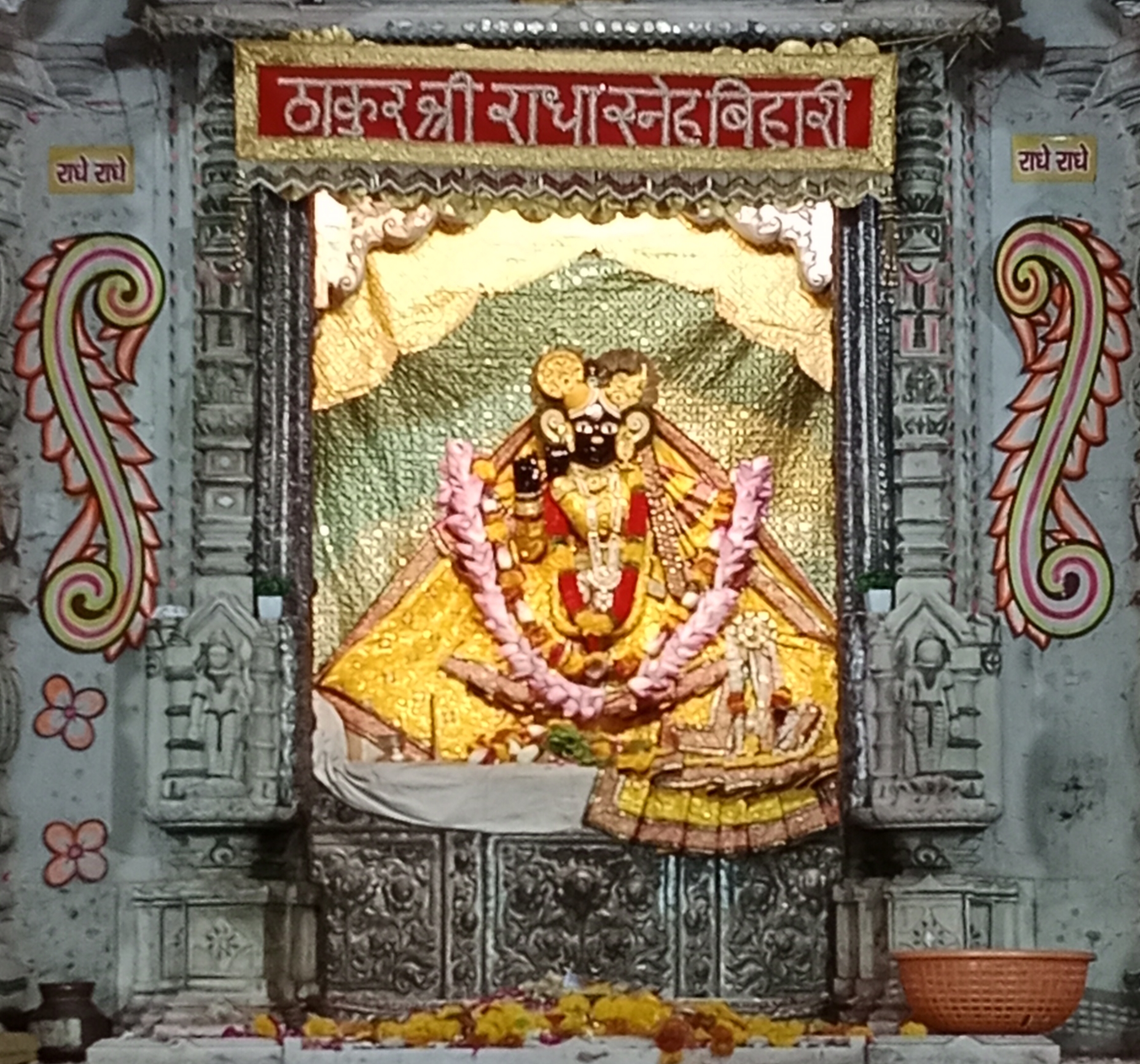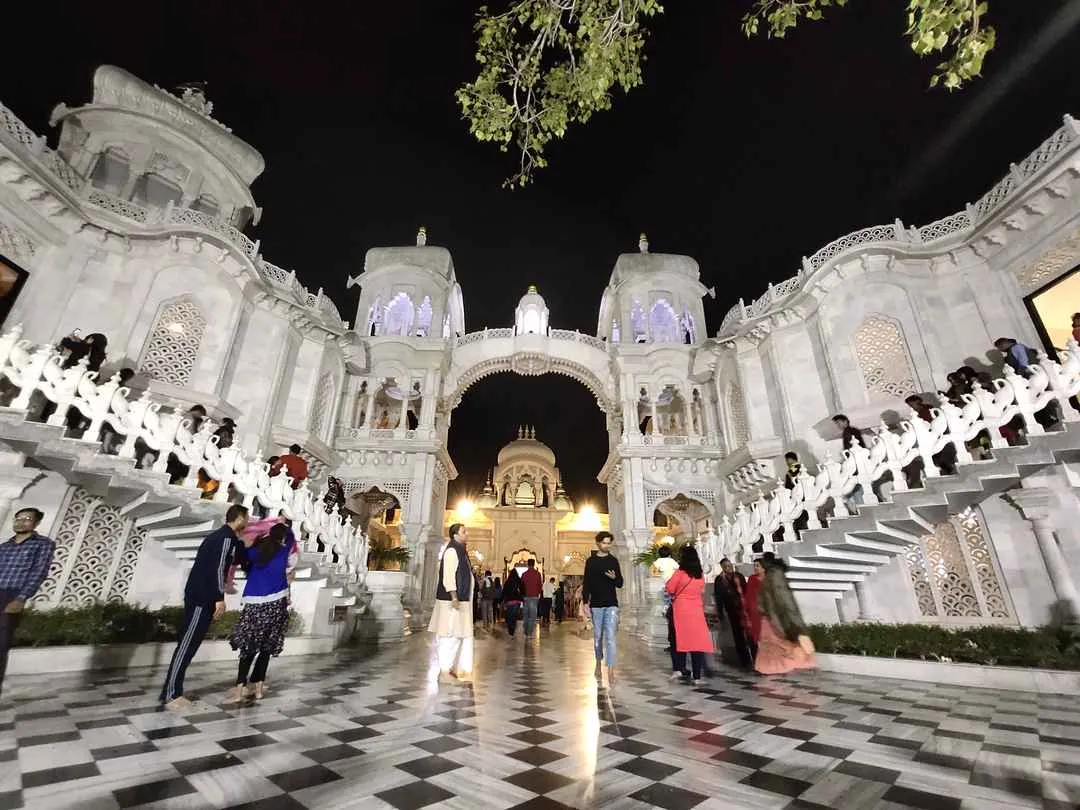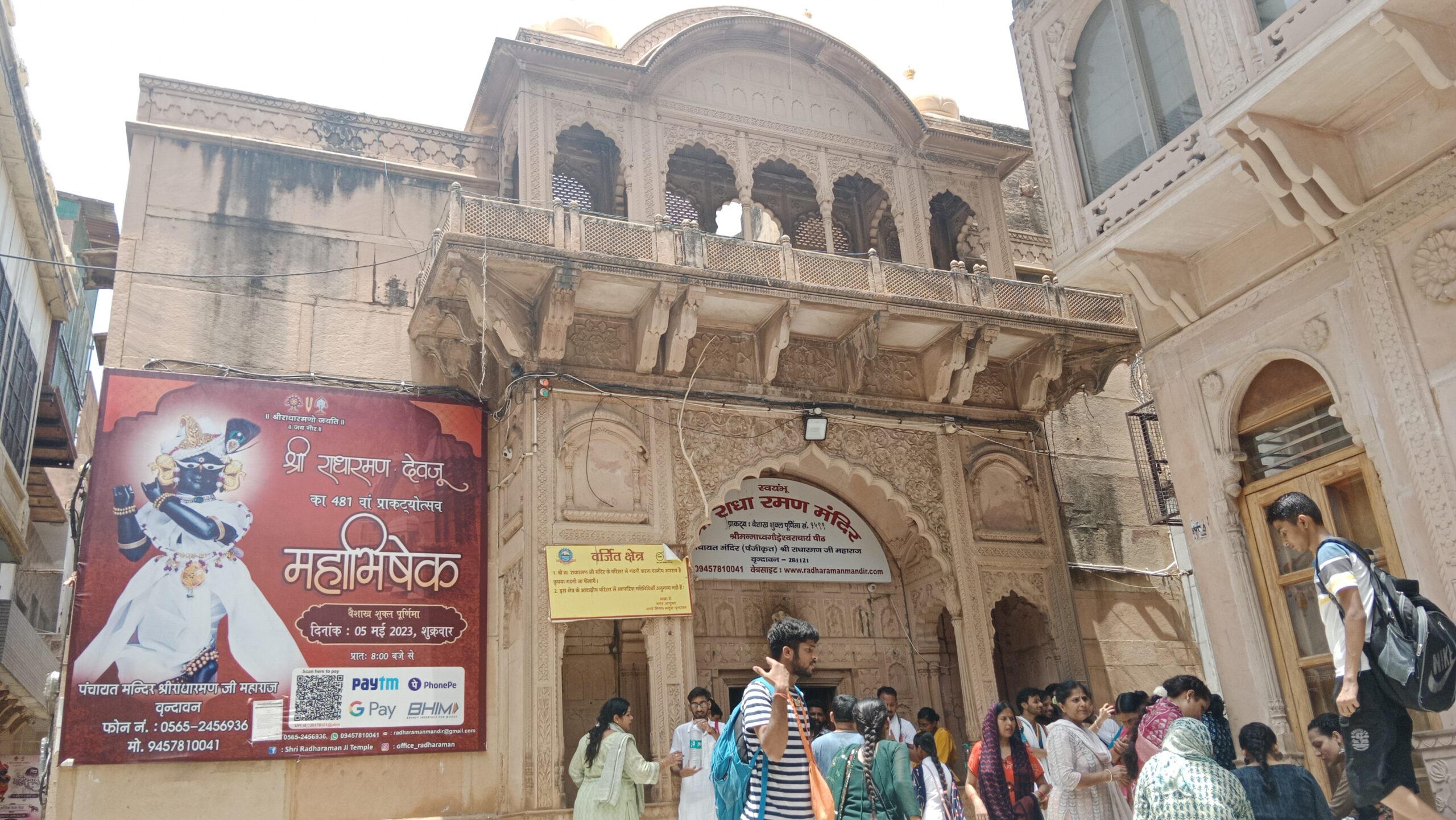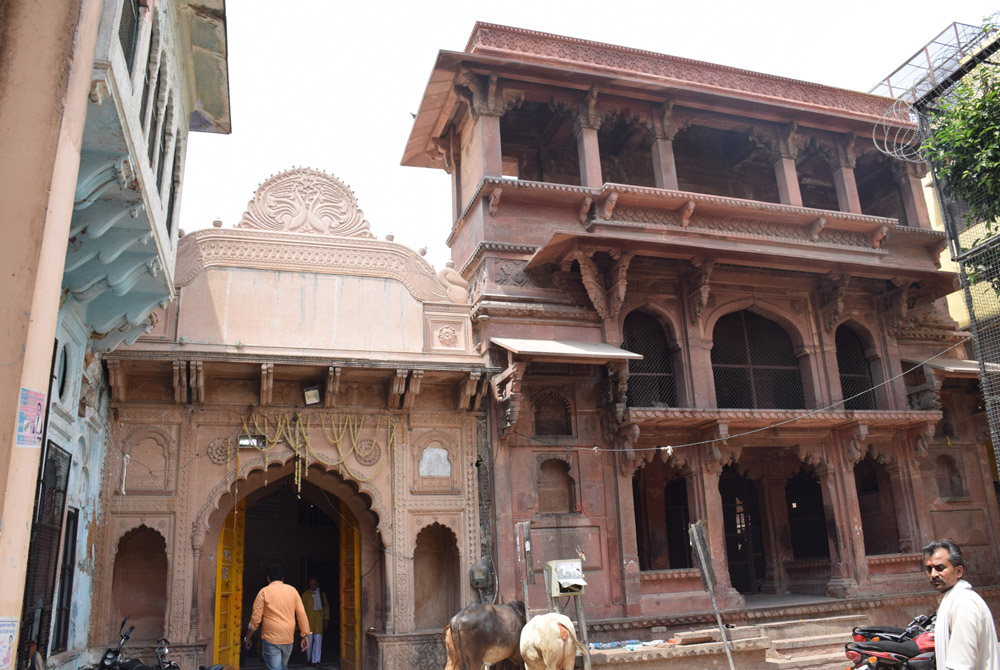Nestled along the banks of the Yamuna River in the northern Indian state of Uttar Pradesh, Vrindavan is a sacred town steeped in mythological and spiritual significance. Renowned as the playground of Lord Krishna during his childhood, Vrindavan boasts a rich tapestry of temples that attract pilgrims and tourists from around the world. Among the myriad of temples that adorn this sacred land, a few stand out for their architectural grandeur, historical importance, and spiritual ambiance. Let’s embark on a spiritual journey through Vrindavan’s best temples and uncover their timeless allure.
Shri Banke Bihari Temple:

Possibly the most revered temple in Vrindavan, the Shri Banke Bihari Temple is dedicated to Lord Krishna in his Banke Bihari form, where he stands with his left leg crossed in front of the right, symbolizing his playfulness and charm. Built in 1864, the temple’s architecture is a fine example of Rajasthani-style craftsmanship, with intricate marble carvings and stunning embellishments. Devotees throng here to catch a glimpse of the deity amidst an atmosphere charged with devotional fervor.
Prem Mandir:

A relatively modern addition to Vrindavan’s temple landscape, the Prem Mandir, or the Temple of Love, is a mesmerizing sight to behold. Constructed entirely of marble, this temple is dedicated to Radha Krishna and their eternal love. The exquisite carvings depicting episodes from Krishna’s life adorn the temple’s exterior, while the interiors are adorned with beautifully crafted statues of Radha and Krishna. The temple’s illuminated façade casts a spellbinding aura after sunset, drawing visitors into a realm of divine romance.
ISKCON Vrindavan:

The International Society for Krishna Consciousness (ISKCON) temple in Vrindavan is a spiritual oasis that beckons devotees and seekers alike. With its towering spires and vibrant atmosphere, the temple complex pulsates with the chanting of the Hare Krishna mantra and the rhythm of devotional music. Inside, devotees can participate in various rituals, attend enlightening discourses, and relish sattvic vegetarian meals at the temple’s cafeteria. The temple’s serene ambiance offers a tranquil retreat from the bustling streets of Vrindavan.
Radha Raman Temple:

Dedicated to Lord Krishna as Radha Raman, the Radha Raman Temple holds a special place in the hearts of Vaishnavites. Legend has it that the sacred deity in the temple self-manifested from a Shaligram shila (sacred stone) and was originally worshipped by Gopal Bhatta Goswami, a prominent saint of the Gaudiya Vaishnavism tradition. The temple’s sanctum exudes an aura of divinity, drawing devotees seeking solace and spiritual elevation.
Radha Vallabh Temple:

The Radha Vallabh Temple epitomizes the profound love between Radha and Krishna, celebrated in Vaishnavite theology. Established by Hith Harivansh Mahaprabhu in the 16th century, the temple is renowned for its unique tradition of “Seva Kunj,” where the deities are adorned with new clothes every day, symbolizing the eternal love between the divine couple. The temple’s serene surroundings and soul-stirring kirtans create an atmosphere conducive to spiritual contemplation and divine communion.
Frequently Asked Questions?:
- What is the best time to visit Vrindavan’s temples? Vrindavan experiences a diverse range of festivals and religious celebrations throughout the year, making it an enchanting destination for spiritual seekers. However, the months of October to March are considered the most pleasant for temple visits, owing to the favorable weather conditions and the festive fervor surrounding major Hindu festivals like Diwali and Holi.
- Are there any dress code restrictions for visiting the temples? While there is no strict dress code enforced in most of Vrindavan’s temples, it is advisable to dress modestly out of respect for the sacred atmosphere. Avoid wearing revealing or provocative clothing, and consider covering your head before entering the inner sanctums as a sign of reverence.
- Can non-Hindus visit Vrindavan’s temples? Yes, Vrindavan’s temples welcome visitors from all walks of life, irrespective of their religious beliefs. However, it is essential to adhere to the temple’s rules and regulations, maintain decorum, and refrain from any behavior that may disrupt the sanctity of the sacred space.
- Are photography and videography allowed inside the temples? While photography and videography are generally permitted in the outer precincts of most temples, it is advisable to seek permission before capturing images inside the inner sanctums. Some temples may have restrictions on photography, especially during religious ceremonies and rituals, out of respect for the deity and the devotees’ privacy.
- How can I participate in temple rituals and ceremonies? Most temples in Vrindavan offer devotees the opportunity to participate in various rituals and ceremonies, such as aarti, bhajan-kirtan, and prasad distribution. Feel free to inquire with the temple authorities or the local priests about the timings and procedures for participating in these sacred rituals, and immerse yourself in the devotional ambiance of Vrindavan’s spiritual heritage.
